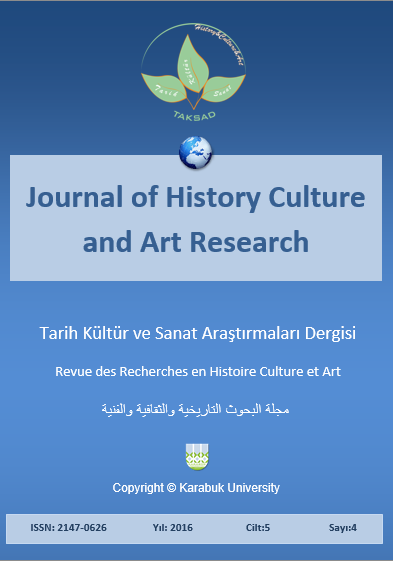Tehran Water Museum with the Performance-Oriented Approach to Bionic Architecture
DOI:
https://doi.org/10.7596/taksad.v5i4.619Keywords:
Museum, Water, Bionic, Functionalism, Nature.Abstract
Form and function of architecture in nature, is a process that is perceived as instinctive as the development of internal growth and creation. The most basic level of commitment to life that reveals itself in the form of materials. Architecture form and shape to the beat and rhythm of the invisible life, in fact, it is a process which gives the project structure and the structure of the plan. Every living organism is driven by unchangeable force. Trying to become more efficient form and function. In the natural area is very important that "performance" is defined as the process and relationship and "form" is defined as a result of this process. Forms of interaction with nature that takes shape and naturally goes in the direction of performance to match its relationship with the wider environment and in the surrounding territory. Methods and new ideas can be learned from nature. Generally architecture is defined as to imagine, design, understanding and build according to circumstances. These problems may in itself was fully functional and to varying degrees, reflecting the economic, political and social project. In any case, it seems that the status quo is not simply satisfying. For this reason, we seek a new agreement that they "answer the question" is called. Therefore, in this study, based on architectural features permit, trying to establish a performance-oriented architecture, nature-based design and natural patterns to be defined by VitruviusReferences
Amin Zadeh, Behnaz, (2003). Water, Architecture and Urbanism of Tehran Muslims. Specialized Magazine of Book of the Month Art.
Cavendish, Richard, (2003) The Primordial Chaos of Water Symbolism.Ttranslated By Saeed Rezaei. Specialized Magazine of Book of the Month Art, Tehran.
Dehkhoda, Ali Akbar, (1960). Dehkhoda Dictionary. Publication of Tehran University. Tehran.
Golabchi, Mahmoud, (2014). Bionic Architecture. Tehran University. Tehran.
Haeri, Mohammad Reza, (2007). Qanat in Iran. Cultural Research Bureau. Tehran.
Hagan, S. (2001). Taking Shape: A New Contract Between Architecture and Nature. Architectural Press, St.Louis,USA
Javaheri, Parham and Javaheri, Mohsen, 2006, "Challenge for water in Fars ancient", Samar Publication. Tehran.
Lahmian, Reza, (2003). Water, the Origin and Transmission of Civilizations. Tehran: Specialized Monthly of Book of the Month Art.
Margolius, Ivan, (2009). Architects + Engineers = Structure. Translated By Mahmoud Golabchi. Publication of Tehran University. Tehran.
Mir Shokraei, Mohammad, (2003). Culture and Water. Specialized Magazine of Book of the Month Art. Tehran.
Raisnia, Rahim, (2004). Azerbaijan in the course of history of Iran. Tabriz: Nima Publication.
Ranjbar, Nahid, (1996). Article of Water Garden Museum. Municipal Partners' Internal Magazine Publication. Issue 52.
Vitruvius, Polio, (2009). Ten Books of Architecture. Translated By Rima Fayyaz. Publication of Art University.
Downloads
Published
How to Cite
Issue
Section
License
All papers licensed under Creative Commons 4.0 CC-BY.- Share — copy and redistribute the material in any medium or format
- Adapt — remix, transform, and build upon the material for any purpose, even commercially.
Under the following terms:
Attribution — You must give appropriate credit, provide a link to the license, and indicate if changes were made. You may do so in any reasonable manner, but not in any way that suggests the licensor endorses you or your use.
- No additional restrictions — You may not apply legal terms or technological measures that legally restrict others from doing anything the license permits.







